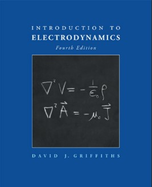Solution Found!
A particle of mass m and charge q is attached to a spring
Chapter 11, Problem 22P(choose chapter or problem)
Problem 22P
A particle of mass m and charge q is attached to a spring with force constant k, hanging from the ceiling (Fig. 11.18). Its equilibrium position is a distance h above the floor. It is pulled down a distance d below equilibrium and released, at time t = 0.
(a) Under the usual assumptions (d ≪ λ ≪ h), calculate the intensity of the radiation hitting the floor, as a function of the distance R from the point directly below q. [Note: The intensity here is the average power per unit area of floor.]
At what R is the radiation most intense? Neglect the radiative damping of the oscillator.
(b) As a check on your formula, assume the floor is of infinite extent, and calculate the average energy per unit time striking the entire floor. Is it what you’d expect?
(c) Because it is losing energy in the form of radiation, the amplitude of the oscillation will gradually decrease. After what time τ has the amplitude been reduced to d/e? (Assume the fraction of the total energy lost in one cycle is very small.)
Questions & Answers
QUESTION:
Problem 22P
A particle of mass m and charge q is attached to a spring with force constant k, hanging from the ceiling (Fig. 11.18). Its equilibrium position is a distance h above the floor. It is pulled down a distance d below equilibrium and released, at time t = 0.
(a) Under the usual assumptions (d ≪ λ ≪ h), calculate the intensity of the radiation hitting the floor, as a function of the distance R from the point directly below q. [Note: The intensity here is the average power per unit area of floor.]
At what R is the radiation most intense? Neglect the radiative damping of the oscillator.
(b) As a check on your formula, assume the floor is of infinite extent, and calculate the average energy per unit time striking the entire floor. Is it what you’d expect?
(c) Because it is losing energy in the form of radiation, the amplitude of the oscillation will gradually decrease. After what time τ has the amplitude been reduced to d/e? (Assume the fraction of the total energy lost in one cycle is very small.)
ANSWER:
Step 1 of 3
Part a
We are required to calculate the intensity of radiation of the charge.
Given that the intensity is nothing but the average power incident on unit area of the floor.
The Poynting vector is given as,
The incident power per unit area,
…..(1)
From the figure,
Substitute in (1),
Now, dipole moment
This is the expression for intensity of the radiation.
To find the at which the radiation is the most intense, we need to differentiate
with respect to
and equate the result to zero.
Equating to zero,
Therefore, the required value of is
.
